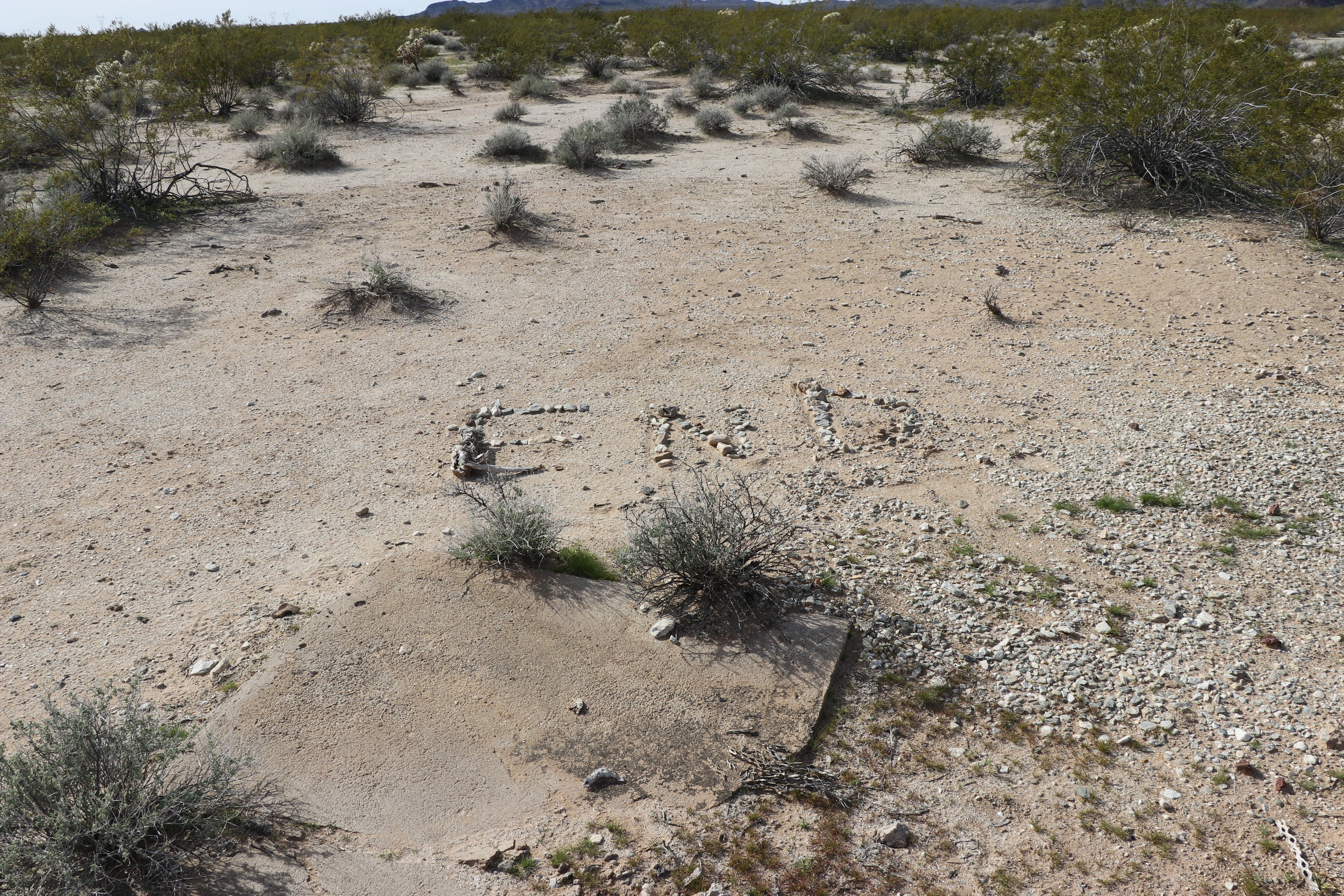La Paz county
Camp Bouse
Once a top secret military operation, this site trained and tested troops from 1943 to 1944.
Camp Bouse was a World War II military training camp in the Butler Valley about 15 miles east of the present day town of Bouse. The camp was once home to top secret tests. Camp Bouse was part of the larger Desert Training Center and California-Arizona Maneuver Area. While most buildings and equipment were removed following the war, foundations, memorials, and the flagpole remain on site today.
In 1942, General George S. Patton visited the Sonoran and Mohave deserts of western Arizona and southern California. The remote, relatively unpopulated location, combined with nearly the same environment and terrain as North Africa, led to the creation of the Desert Training Center, which was also known as the California-Arizona Maneuver Area. The total area encompassed over 31,000 square miles across the two states and contained numerous different camps and outposts. Other camps in Arizona included Camps Laguna, Horn, and Hyder further to the south. Construction began on Camp Bouse in the secluded Butler Valley in March of 1943. Camp Bouse would be different, and kept top secret.
By August of 1943, the camp was finished and was staffed by the 9th & 10th Tank Groups along with several other special armored battalions. Around 10,000 troops would call the camp home. One of the main missions of the camp was to test a new project nicknamed “the Gizmo”. The Gizmo, better known now as the ‘Canal Defense Light’ project, was a 13 million candlepower light mounted to the tops of M3 tanks. The bright light was designed to confuse and stun enemy troops by flashing several times per second.
The camp contained numerous buildings designed to house and supply those stationed here. Headquarters buildings, rows of tent housing, and maintenance shops lined the streets at Camp Bouse. A 500,000 gallon water reservoir was constructed to meet the demands of the Camp. The camp also featured its own hospital and medical support buildings. Because of the secrecy of training here, those injured would be required to stay on camp property to avoid any critical information getting leaked out. Troop movement in and out of camp was also limited to nonexistent. A target range was also placed a little over a mile and a half northwest of camp in the surrounding hills.
The Canal Defense Light never panned out to be a huge success. They found that having a bright light perched on top of tanks was actually more of a disadvantage during battle, since it would give away their positions to enemy troops. The CDL actually was more useful for lighting up the battlefield or camp during night operations
By April of 1944, the troops stationed at Camp Bouse were deployed to Europe for combat. This rendered the camp mostly abandoned. Following the war, the army cleaned up and cleared most of the structures at Camp Bouse. The land was returned to the landowners following cleanup. The site has sat abandoned for over 70 years.
Some cement foundations, sidewalks, and other memorials remain on the property near the flagpole, which still stands today on the northwest side of camp. Most of the graded roads are overgrown and other memorials remain strewn about the grounds. The water reservoir remains closer to the main road in. A large pit, rumored to be used for boxing matches and other entertainment for the troops remains near the center of camp. Keen eyed visitors will also be able to see numerous tank tracks left in the desert floor between the camp and the firing ranges. While not much is left today, Camp Bouse played a truly important and strategic role in the war. The nearby town of Bouse also features a memorial and old tanks. A yearly memorial service is also held in Bouse and at Camp Bouse.
A visit to the site today is both informational and solemn. The camp can be reached via dirt powerline roads from Bouse to the west (Highway 72) or from Wendon to the east (Alamo Lake Road). A high-clearance vehicle is recommended. We visited Camp Bouse on our 2019 summer special along the Arizona Peace Trail and you can see footage here. Please be respectful and courteous if you make the trip out.
Sources:
“Camp Bouse.” BouseCOC - Camp Bouse, bouseazchamber.com/CampBouse.html.
Du Shane, Neal. “Camp Bouse, AZ.” American Pioneer & Cemetery Research Project, 26 July 2008, www.apcrp.org/CAMP_BOUSE/Camp_Bouse_Text_072608.htm.
“Camp Bouse.” Desert Training Center, www.deserttrainingcenter.com/Camp%20Bouse.html.
“Canal Defence Light.” Wikipedia, Wikimedia Foundation, 25 May 2018, en.wikipedia.org/wiki/Canal_Defence_Light.
“Desert Training Center.” Wikipedia, Wikimedia Foundation, 21 Mar. 2019, en.wikipedia.org/wiki/Desert_Training_Center.








